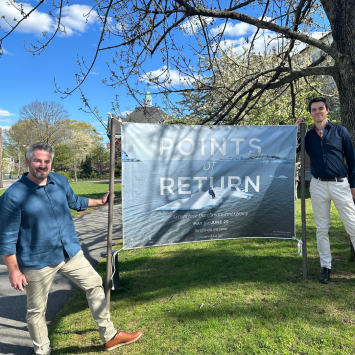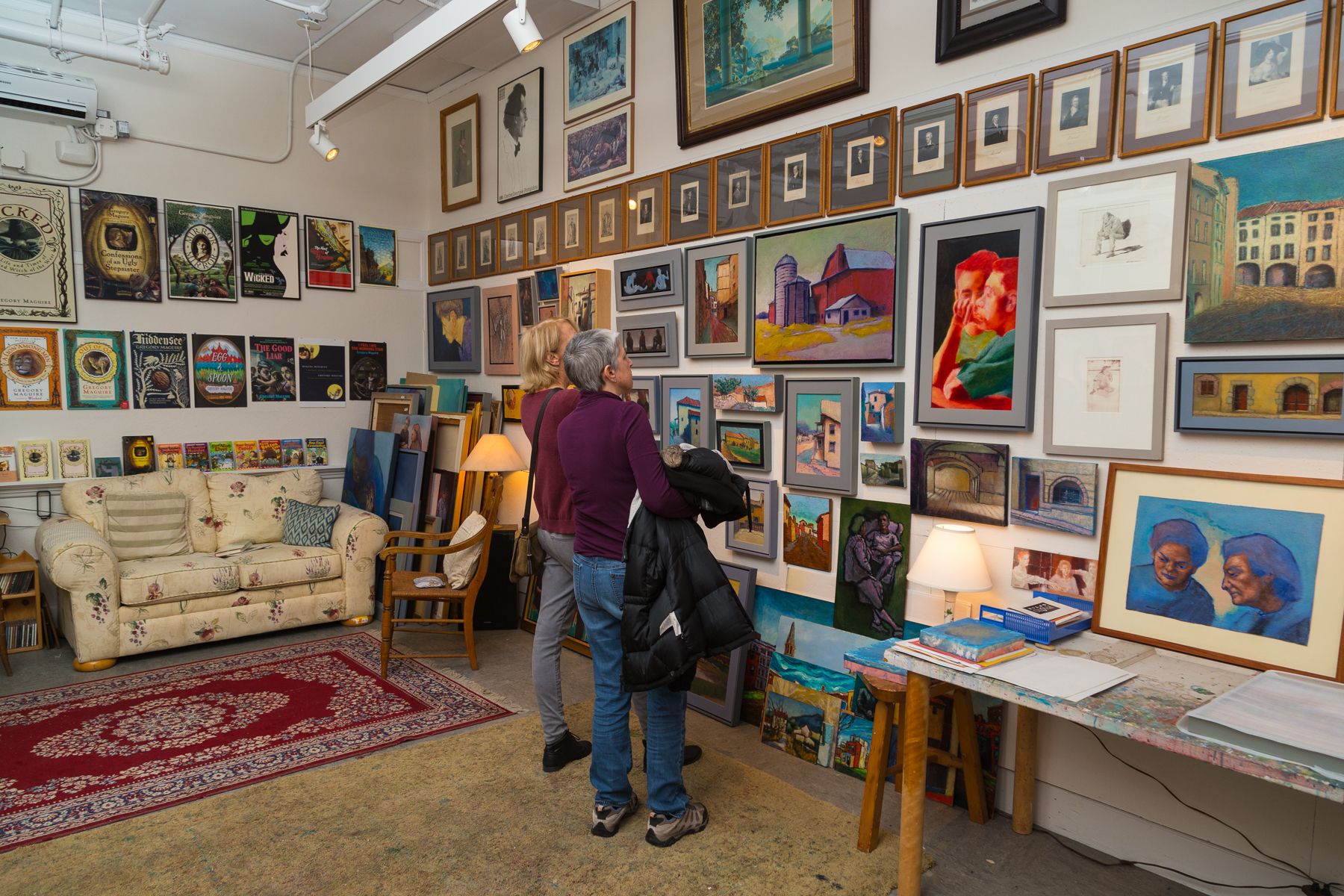Environmental Art: An Ongoing Project
May 29, 2024 by Kelby

As TAPPED IN comes to a close, we take a look back at last season's poignant closing exhibition, Points of Return. Curated by environmental artists David Cass and Gonzaga Gómez-Cortázar Romero and featuring the work of 27 international artists, Points of Return similarly focused on the essential intersection of art and science.
Recently, we were able to speak with the duo about what's next for the 'ongoing project' that is Points of Return, their excitement about the convergence of art and science in TAPPED IN, and what they would say to future environmental artists.
Tell us about yourselves and the formation of A La Luz.
We are environmental artists David Cass & Gonzaga Gómez-Cortázar Romero. We met in Spain in 2014 and soon after, started collaborating. Our practices are multifaceted, but one clear crossover point is digital media. Our first collaborations took the form of films focused on the theme of drought and desertification.
Given that we both possess a strong environmental awareness, it seemed natural to compound our collaboration by embarking upon a longer-term and more organised project. And so, A La Luz was born. The aim of A La Luz – which translates from the Spanish as “spotlight” or “to shed light on” – is to be a wide ranging platform for sustainable and environmentally focussed creative works by both established and emerging artists.
Where did the idea for 'Points of Return' come from?
We believe that the climate crisis can only be tackled collectively. Over the last decade (this year marks our 10th year working together) A La Luz has endeavoured to share, promote, act as reference tool and curate. This includes all art-forms: from painting to architecture; from theatre to literature. We’ve worked with many incredible artists across this time, and in 2019 we began exploring the idea of holding an exhibition of works from like-minded artists from all over the world.
Despite the overwhelmingly negative environmental commentary we consume on a daily basis, as individuals, we are optimists. With that in mind, we wanted to build an exhibition which directed our audience away from despair, to offer some points of return.
The first step was to launch an Open Call, which was widely distributed online during the early months of the COVID pandemic. We received hundreds of submissions. With the help from our jury, we eventually arrived at a selection of 25 artists, chosen for their versatility. We didn’t want to focus on any one media (or specialism) disproportionately, and so you'll notice that no two artists in the exhibition cover the same ground.
We are particularly interested in your conversion of an exhibition from online to physical form, and back again. What can you tell us about that process?
This was a mammoth task, there’s no denying it. On a website, you can present artworks without limit: there aren’t shipping considerations, size restrictions, the need to ration a budget. And so we spent many months exchanging ideas with our artists in order to come up with effective physical display solutions. We were thrilled by the eventual outcome, which wouldn’t have been possible without the artists’ flexibility and willingness to convey their messages.
This year—in addition to the still ongoing virtual version of Points of Return at pointsofreturn.org — we’ve created a new webpage to host documentation of the Umbrella exhibition, and the project as a whole. Find it at pointsofreturn.org/umbrella. Here you can find images of the exhibition, alongside film and testimonials, including these words from Earthwatch founder Brian Rosborough, who we were honoured to have as a host for one of the associated exhibition events:
“Points of Return—a collection of artistic interpretations depicting the velocity and impacts of climate change—is both original and timely, deciphering science while offering indelible insights into the gathering storm that faces humanity. The combination of art and science is an innovative way to engage all ages in a civic discussion about what actions need to be taken, by our generation and our successors.”
Our current exhibition, ‘Tapped In’, pairs artists and scientists. What can you tell us about the relationship and convergence between art and science in your exhibition?
We’re sure that many of you will find this surprising, but, this has been one of the most exciting parts of our project. The artists featured in Points of Return have been able to tap-in to complex (and often tedious) scientific data, in order to use this as subject matter. Not only that, but one artist even managed to interview scientists working at the front line of the climate crisis, recording their personal responses to the data they worked with.
Art is a superb medium to convey scientific data. Artists are not bound by the same rules and regulations that scientists are. We believe that people stand more chance of engaging with heavy environmental realities if presented them in an accessible (even intimate) manner. Art helps to individualise, to personalise climate change.
Art also has the power to touch our emotions in a way that science can’t. And if our emotions are touched we will be more inclined to take action.
Can you give us a summary and tell us what’s next?
We are currently planning a follow-up exhibition, looking for a venue that’s a good fit. The layout of The Umbrella was ideal for this exhibition; its combination of facilities are top class. We were able to effectively exhibit projections and dark-room screenings alongside paintings and photographs. The size of the space allowed us to emphasise the project’s journey-like nature, and made for excellent guided tours and special events. The local community made regular appearances at these, and others travelled from further afield. Rarely have we been part of such an inclusive and social exhibition project.






